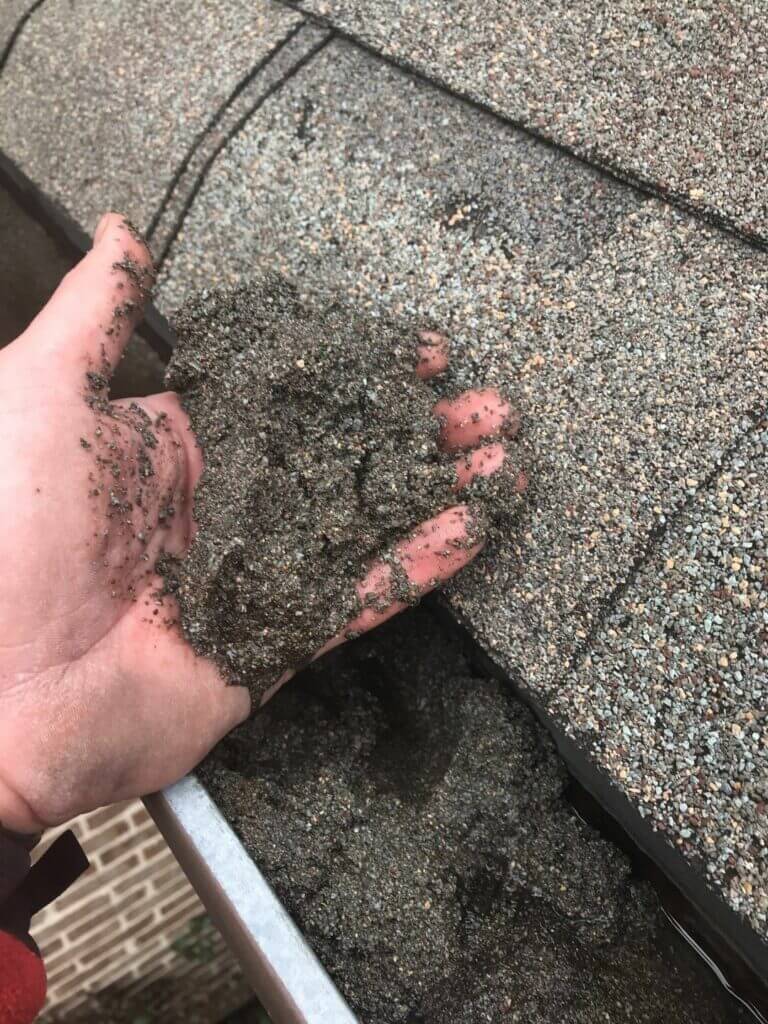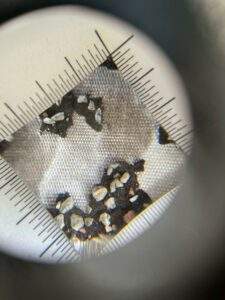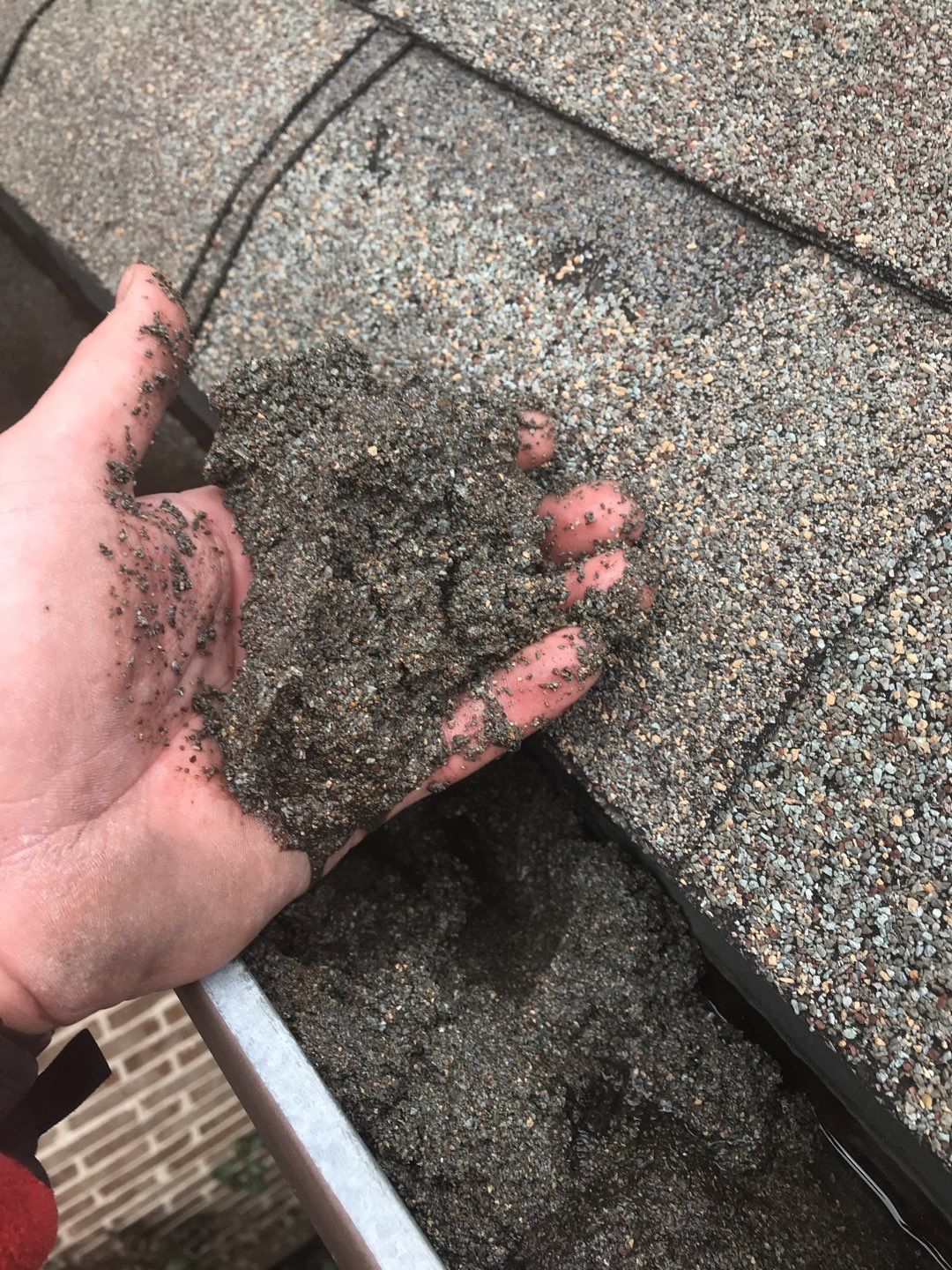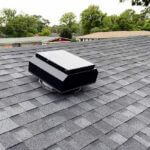
Why is My Roof Losing Granules?
Roofs play a crucial role in protecting our homes from various weather conditions. Asphalt shingles, a popular roofing material, are coated with granules that provide an extra layer of protection and improve their appearance.
However, over time, you may notice your roof shedding these granules, which many homeowners say can be a cause for concern. In this blog post, we’ll delve into the reasons why a roof loses granules and break down each cause into its own section. We’ll also discuss some solutions to help you maintain your roof’s integrity.
What are Shingle Granules?
First off, what are roof shingle granules? Shingle granules are small, mineral-coated particles that coat the surface and outer layer of asphalt shingles. These granules are typically made from crushed stone or a mineral mixture and then coated with ceramic pigments to provide both durability and a variety of color options. You’ll find asphalt shingle granules made in a range of sizes, shapes, and hues – making each roof a unique and beautiful masterpiece.
To learn even more, check out our blog: What Are Shingle Granules and Why are They Important?
How long do granules typically last on asphalt shingles?
The lifespan of granules on asphalt shingles largely depends on the quality of the shingles and the environmental factors they are exposed to. Typically, granules can last for the majority of the asphalt shingle itself’s life, which ranges from 15 to 30 years. High-quality shingles with proper installation and maintenance can retain their granules longer, whereas low-quality shingles or those exposed to harsh weather conditions may lose granules more rapidly.
It is normal for some granule loss to occur over time, especially as the shingles age. However, excessive granule loss can be an indication that your roof may need maintenance or even replacement. Regular inspections and proper maintenance can help ensure the granules on your asphalt shingles last as long as possible.
Reasons Your Roof Loses Granules
- Normal Wear and Tear One of the most common reasons a roof loses granules is due to regular wear and tear. As your roof ages, the granules gradually wear away due to exposure to harsh weather conditions like rain, hail, snow, and the sun’s UV rays. This is an expected part of your roof’s lifecycle, and there isn’t much you can do to prevent it. However, regular maintenance and inspections can help you identify when it’s time to replace your shingles.
- Manufacturer Defects Sometimes, shingles lose granules because of manufacturing defects. In such cases, the granules may not adhere correctly to the asphalt base, leading to premature shedding. If you notice granule loss soon after installing a new roof, it could be due to a manufacturing issue. Contact your shingle manufacturer or installer for information on warranties and possible solutions.
- Foot Traffic Excessive foot traffic on your roof can cause granules to dislodge or become damaged. If you or your contractor frequently walk on your roof for maintenance or repairs, the added pressure can wear down the granules. To minimize granule loss, limit foot traffic to only essential tasks and use proper footwear to distribute weight evenly.
- Hail Damage Hailstorms can cause significant damage to your roof, including granule loss. Hailstones can dislodge or break granules upon impact, leaving your shingles exposed and vulnerable to further damage. If your area is prone to hailstorms, consider installing impact-resistant shingles for added protection.
- Moss and Algae Growth Moss and algae can grow on your roof, especially in damp, shaded areas. As they spread, they can lift and dislodge granules from your shingles. To prevent granule loss due to moss and algae, keep your roof clean and clear of debris, trim overhanging branches, and consider installing zinc or copper strips along your roof ridge to inhibit growth.
- Improper Installation If your shingles were installed incorrectly, granules can loosen and fall off more easily. Inadequate nailing, improper alignment, or using the wrong type of underlayment can lead to granule loss. To ensure proper installation, always work with a reputable roofing contractor.

Signs that It’s Time for Repair or Replacement
Determining when granule loss on your shingles necessitates repair or replacement depends on several factors.
First, consider the age of your roof. If your shingles are nearing or past their expected lifespan, widespread granule loss may indicate that it’s time for a complete roof replacement.
Secondly, evaluate the extent of the damage. If granule loss is limited to a few isolated areas or individual shingles, repairs may be sufficient. However, if granule loss is extensive or exposes the underlying layers of your roofing shingles to the elements, replacement may be the best course of action.
Here are possible signs that your granule loss requires roof repairs or replacement:
- Widespread granule loss: If you notice granules missing from large areas of your roof, this could indicate the need for repairs or replacement.
- Aging roof: Shingles nearing or past their expected lifespan may lose granules more rapidly, signaling the need for a roof replacement.
- Exposed underlying layers: If the loss of granules has exposed the asphalt layer or underlayment, this is a sign that your shingles require attention.
- Leaks or water damage: If you experience leaks, water stains, or other signs of water damage inside your home, this could be a result of granule loss compromising your roof’s protective abilities.
- Curling or buckling shingles: Granule loss may be accompanied by curling or buckling shingles, indicating that your roof may need repairs or replacement.
- Moss or algae growth: If you notice moss or algae on your roof, it could lead to granule loss and the need for maintenance or replacement.
- Consistent granule accumulation: If you regularly find granules in your gutters or at the base of your downspouts, this may signal that your shingles are losing granules at an accelerated rate and need attention.
Is it normal to find granules in my gutters and downspouts?
Yes, it is completely normal to find some granules in your gutters and downspouts. Granule loss is a natural part of the aging process for asphalt shingles, and small amounts of granules will gradually shed over time. The loose granules can be carried by rainwater into your gutters and eventually make their way to the downspouts.
However, if you notice a significant accumulation of granules in your gutters or around the base of your downspouts, it could be a sign of excessive granule loss. This might indicate that your shingles are reaching the end of their lifespan or that there is an issue with the shingles, such as manufacturing defects or damage from weather events like hailstorms. In such cases, it is essential to have your roof inspected by a professional to determine the cause and assess whether repairs or replacement with other roofing materials are necessary.

What to Do About Granule Loss
If you notice granule loss on your roof, it’s essential to take action promptly to prevent further damage and ensure the longevity of your roof.
First, assess the extent and severity of the granule loss. If it’s isolated to a small area or just a few granules or shingles, you might be able to replace the affected shingles without needing a complete roof replacement.
However, if granule loss is widespread, it may be a sign that your roof has reached the end of its life and needs to be replaced.
Regular roof inspections by a professional can help identify issues before they escalate. If you suspect manufacturing defects or improper roof installation done, reach out to your roofing contractor or the shingle manufacturer to discuss warranty coverage and potential solutions.
Finally, adopt preventative measures such as trimming overhanging branches, and limiting foot traffic to minimize the cause of granule loss, in the future.
Work With Restoration Roofing
Understanding the reasons behind granule loss is essential for maintaining the integrity and longevity of your whole roofing system. Regular inspections and maintenance, along with addressing any issues promptly, can help prevent further damage and extend the life of your roof. If you’re uncertain about the condition of your roof, it’s always a good idea to consult with a professional roofing contractor for advice and guidance.
Give Restoration Roofing a call at 901-854-3402 or fill out our Contact Us form and we will reach out to you with our next available roof inspection call. Make sure to follow us on Facebook and Instagram for more tips on finding the best roofing contractor for you.





